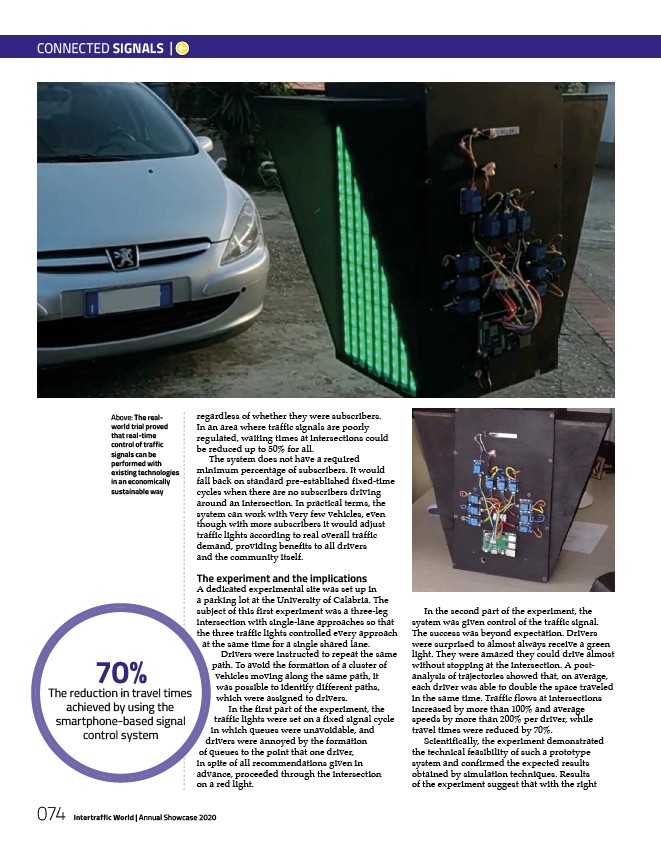
CONNECTED SIGNALS |
regardless of whether they were subscribers.
In an area where traffic signals are poorly
regulated, waiting times at intersections could
be reduced up to 50% for all.
The system does not have a required
minimum percentage of subscribers. It would
fall back on standard pre-established fixed-time
cycles when there are no subscribers driving
around an intersection. In practical terms, the
system can work with very few vehicles, even
though with more subscribers it would adjust
traffic lights according to real overall traffic
demand, providing benefits to all drivers
and the community itself.
The experiment and the implications
A dedicated experimental site was set up in
a parking lot at the University of Calabria. The
subject of this first experiment was a three-leg
intersection with single-lane approaches so that
the three traffic lights controlled every approach
at the same time for a single shared lane.
Drivers were instructed to repeat the same
path. To avoid the formation of a cluster of
vehicles moving along the same path, it
was possible to identify different paths,
which were assigned to drivers.
In the first part of the experiment, the
traffic lights were set on a fixed signal cycle
in which queues were unavoidable, and
drivers were annoyed by the formation
of queues to the point that one driver,
in spite of all recommendations given in
advance, proceeded through the intersection
on a red light.
074 Intertraffic World | Annual Showcase 2020
In the second part of the experiment, the
system was given control of the traffic signal.
The success was beyond expectation. Drivers
were surprised to almost always receive a green
light. They were amazed they could drive almost
without stopping at the intersection. A postanalysis
of trajectories showed that, on average,
each driver was able to double the space traveled
in the same time. Traffic flows at intersections
increased by more than 100% and average
speeds by more than 200% per driver, while
travel times were reduced by 70%.
Scientifically, the experiment demonstrated
the technical feasibility of such a prototype
system and confirmed the expected results
obtained by simulation techniques. Results
of the experiment suggest that with the right
Above: The realworld
trial proved
that real-time
control of traffic
signals can be
performed with
existing technologies
in an economically
sustainable way
70% The reduction in travel times
achieved by using the
smartphone-based signal
control system